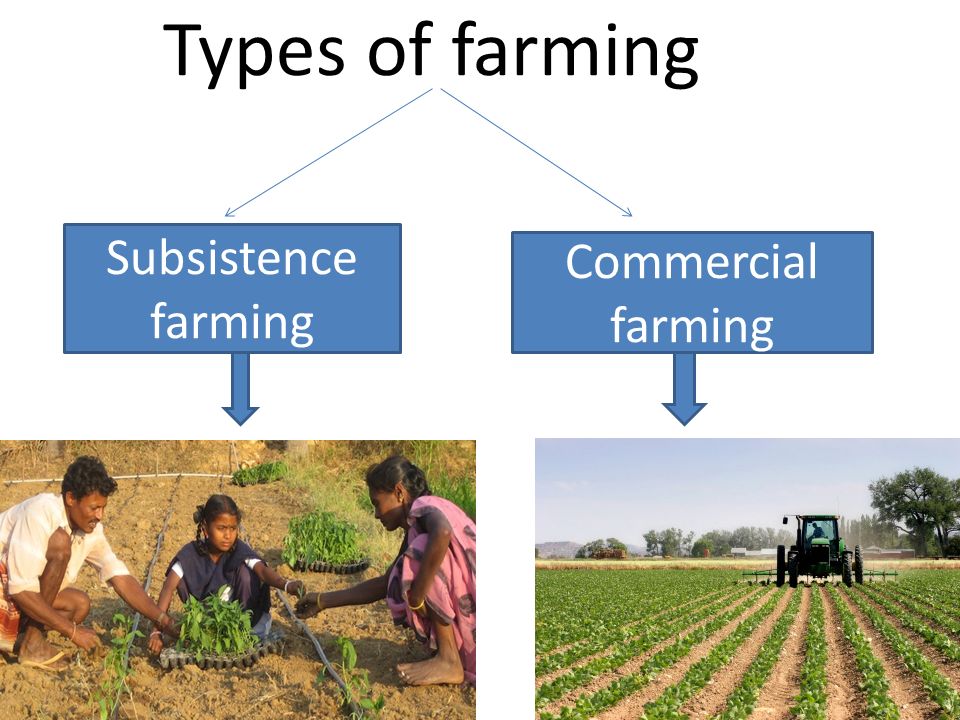Discovering the Distinctions Between Commercial Farming and Subsistence Farming Practices
The duality in between commercial and subsistence farming practices is noted by varying purposes, functional scales, and source use, each with profound ramifications for both the environment and culture. On the other hand, subsistence farming highlights self-sufficiency, leveraging conventional approaches to maintain family requirements while nurturing area bonds and social heritage.
Economic Objectives
Economic objectives in farming techniques commonly dictate the techniques and scale of procedures. In business farming, the main economic purpose is to make best use of revenue.
In comparison, subsistence farming is predominantly oriented towards meeting the immediate needs of the farmer's household, with surplus production being very little - commercial farming vs subsistence farming. While commercial farming is profit-driven, subsistence farming is centered around sustainability and durability, reflecting an essentially different collection of economic imperatives.

Scale of Procedures
The difference between commercial and subsistence farming ends up being particularly noticeable when considering the range of operations. The range of industrial farming permits for economic climates of scale, resulting in decreased expenses per device via mass manufacturing, enhanced efficiency, and the ability to invest in technical developments.
In plain contrast, subsistence farming is generally small-scale, concentrating on generating just sufficient food to satisfy the prompt requirements of the farmer's household or regional neighborhood. The acreage entailed in subsistence farming is often limited, with less access to modern-day innovation or mechanization. This smaller sized scale of procedures reflects a dependence on traditional farming strategies, such as manual work and basic tools, bring about lower performance. Subsistence ranches focus on sustainability and self-sufficiency over earnings, with any type of excess generally traded or bartered within neighborhood markets.
Resource Application
Industrial farming, identified by massive procedures, often employs advanced modern technologies and mechanization to enhance the use of sources such as land, water, and fertilizers. Precision farming is increasingly taken on in business farming, making use of information analytics and satellite modern technology to monitor crop health and wellness and maximize resource application, more boosting yield and resource effectiveness.
In contrast, subsistence farming operates on a much smaller sized scale, mainly to meet the prompt requirements of the farmer's home. Source use in subsistence farming is usually restricted by monetary constraints and a dependence on standard methods.
Environmental Influence

On the other hand, subsistence farming, exercised on a smaller range, normally uses traditional strategies that are more in harmony with the surrounding setting. While subsistence farming typically has a lower ecological impact, it is not without obstacles.
Social and Cultural Ramifications
Farming methods are deeply intertwined with the social and social textile of neighborhoods, influencing and reflecting their worths, practices, and financial structures. In subsistence farming, the emphasis gets on growing sufficient food to satisfy the instant needs of the farmer's family, often cultivating a solid sense of community and shared responsibility. Such practices are deeply rooted in neighborhood practices, with expertise gave with generations, thus protecting cultural heritage and reinforcing public connections.
Alternatively, industrial farming is mainly driven by market demands and profitability, typically leading to a shift towards monocultures and large-scale procedures. This technique important link can cause the erosion of traditional farming practices and social identities, as local customizeds and knowledge are replaced by standard, commercial techniques. In addition, the focus on effectiveness and earnings can occasionally diminish the social communication located in subsistence neighborhoods, as economic transactions change community-based exchanges.
The duality in between these farming practices highlights the more comprehensive social ramifications of agricultural choices. While subsistence farming sustains cultural connection and area interdependence, business farming lines up with globalization and economic growth, frequently at the cost of typical social frameworks and social variety. commercial farming vs subsistence farming. Balancing these elements remains a crucial challenge for lasting agricultural growth
Final Thought
The assessment of industrial and subsistence farming click this site practices discloses considerable distinctions in goals, scale, source use, environmental impact, and social effects. Commercial farming focuses on profit and effectiveness via massive procedures and progressed innovations, often at the cost of ecological sustainability. Alternatively, subsistence farming emphasizes self-sufficiency, utilizing traditional techniques and neighborhood sources, thus promoting social conservation and area communication. These contrasting approaches highlight the intricate interaction in between economic growth and the requirement for eco sustainable and socially inclusive farming practices.
The dichotomy between commercial and subsistence farming methods is marked by varying objectives, functional ranges, and source application, each with profound effects for both the environment and society. While commercial farming is profit-driven, subsistence farming is centered around sustainability and durability, showing an essentially various set of financial imperatives.
The distinction in between commercial and subsistence farming comes to be specifically evident when considering the range of procedures. While subsistence farming sustains social continuity and community interdependence, commercial farming lines up with globalization and financial growth, usually at the expense of typical social structures and cultural variety.The examination of look these up industrial and subsistence farming techniques reveals considerable distinctions in goals, range, source use, ecological influence, and social ramifications.